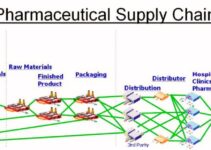Apple is a technology, software, and consumer electronics manufacturing American multinational company. The tech giant company started its business operations in 1976. The premium brand has established a network of approximately over 530 retail chain stores in various countries across the globe. Today, we’ll discuss the supply chain analysis of Apple, which focuses on various SCM elements like procurement planning, inventory management, warehousing, automation, transportation, and distribution.
Supply Chain Analysis of Apple
Let’s discuss the main elements of the supply chain analysis of Apple are as follows;
Planning
The supply chain processes of Apple start with comprehensive planning, designing, and product development. Some of the main steps and stages involved in the planning process of the tech brand are as follows;
- Developing new technologies for the latest products and software
- Earning the IPR (intellectual property rights licenses
- Acquisition of any 3rd party business that would help the company achieve its goals and objectives
- Conducting comprehensive market research to find growth opportunities
- Testing the products and recognizing the potential product assembling cost
- Recognizing the potential quality defects that are in need of urgent evaluation and correction
- Developing the software for the latest and upcoming products
Material and Parts Sourcing
Apple sources materials, parts, tools, and components from countries like China, the USA, Europe, and other Asian countries. The technology brand has established a very large suppliers and vendors network in various countries across the world. The large and worldwide network helps the tech company to smoothly perform its various operations and timely deliver the parts and components to the required location point.
Suppliers Code of Conduct
Apple has developed a strict supplier code of conduct to regulate its practices and ensure its compliance with the standards and requirements. The supplier’s code of conduct comprises of following elements; they’re as follows;
- Compliance with the labor and human rights standards and requirements
- No discrimination of workers based on sexual orientation, race, gender, socioeconomic background, or other differences
- Anti-harassment policies and creating a safe working environment for everyone
- Preventing human trafficking and making sure not to force child labor in the supplier factories
- Conducting training and educational programs for employees and workers
- Standard working hours, wages, benefits, and incentives
- Healthy and safe working environment
Manufacturing
Apple outsources almost all of its production, manufacturing, and assembling operations from Foxconn China. The outsourcing manufacturing firm Foxconn receives research and development specific, product quality standards, and production requirements from the company and manufactures the desired product.
Warehouses
Apple has established a very large network of warehouses in diverse geographical locations across the world. The company has built them precisely in those locations in proximity to the retail chain stores and the retail customers market. It helps the company to decrease the delivery timing, save transportation costs, and limit the impact on nature and the environment.
Logistics and Distribution
Apple employs various distribution and 3rd party logistics service providers for the transportation distribution and delivery of products and goods. The tech brand has established a very large distribution and logistics network. It plays a critical role in transporting raw materials, parts, tools, and components from the suppliers to the production manufacturing and assembling facilities, warehouses and distribution centers, the retail chain stores, and the end consumers.
Carbon Neutral Supply Chain
Apple has a strong commitment to nature and the environment. The objective of the tech giant brand is to make its entire supply chain network carbon-neutral by 2030. The first goal starts with decreasing the carbon emission rate in its production and manufacturing units.
In order to reach its goals and objective, the company is developing its products less carbon intensive, employing more recyclable material in its entire supply chain and production processes. It helps the company to decrease a significant amount of carbon emission rate. In fact, Apple has made it compulsory for its suppliers and manufacturing suppliers to comply with the brand’s decarbonization policy of 2030.
Suppliers Employee Development Fund
According to an estimate, Apple invested approximately 50 million USD on the suppliers employee developmental project. It allows the company to provide learning and educational opportunities to the employees and workers of suppliers and the surrounding community members. The technology brand is collaborating with various NGOs, academic institutes, and other learning organizations. However, the objective is to improve the skill and expertise of the supplier employees; it allows them to manage their work, supply chain operations, health, and well-being in a better and more effective way.
Conclusion: Apple Supply Chain Analysis | Apple Supply Chain Management
After an in-depth study of the supply chain analysis of Apple; we have realized that Apple is the world’s leading tech giant and consumer electronics manufacturing American multinational company. If you are learning about the Apple supply chain analysis; then you should keep in mind the abovementioned SCM elements; procurement, planning, transportation, automation, inventory management, and sortation.
Ahsan is an accomplished researcher and has a deep insight in worldly life affairs. He goes Live 3 days a week on various social media platforms. Other than research writing, he’s a very interesting person.


